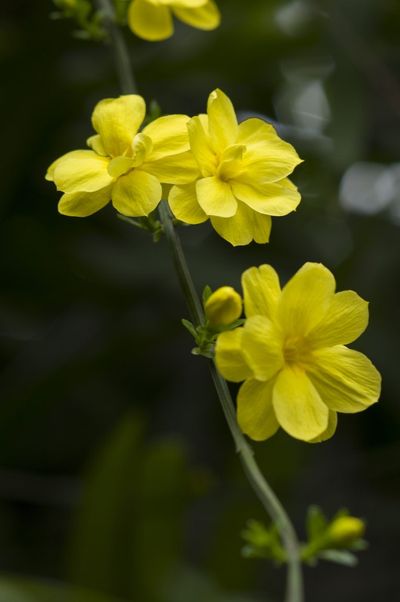Hardy Jasmine Vines
Unfortunately, in zone 6, there are not too many choices of jasmine you can grow outdoors year-round. Therefore, many of us in cooler climates often grow tropical jasmines in containers that can be moved inside in cold weather or outside on warm sunny days. As annuals or houseplants, you can grow any variety of jasmine vines in zone 6. If you are looking for a zone 6 jasmine plant to grow outside year-round, winter jasmine (Jasminum nudiflorum) is your best bet.
Growing Jasmine Plants for Zone 6
Hardy in zones 6 to 9, winter jasmine has yellow flowers that are not as fragrant as other jasmine. However, these flowers bloom in January, February, and March. While they may get nipped by frost, the plant just sends out its next set of blooms. When grown up a trellis, this hardy jasmine vine can quickly reach a 15 feet (5 m.) height. Oftentimes, winter jasmine is grown as a sprawling shrub or groundcover. Not too particular about soil conditions, winter jasmine is an excellent choice as a full sun to part shade groundcover for slopes or areas where it can trail over stone walls. A zone 6 gardener who enjoys a challenge or trying new things, can also try growing common jasmine, Jasminum officinale, in their garden year-round. Reportedly hardy in zones 7 to 10, the internet is full of garden forums where zone 6 gardeners share advice on how they have successfully grown common jasmine year-round in zone 6 gardens. Most of these tips indicate that if grown in a sheltered location and given a nice heap of mulch over the root zone through winter, common jasmine usually survives zone 6 winters. Common jasmine has extremely fragrant, white to light pink flowers. It prefers full sun to part shade and is also not too particular about soil conditions. As a hardy jasmine vine, it will quickly reach a height of 7 to 10 feet (2-3 m.). If you do try to grow common jasmine in zone 6, select a location where it will not be exposed to cold winter winds. Also, apply a heap of at least 4 inches (10 cm.) of mulch around the root zone in late fall.
